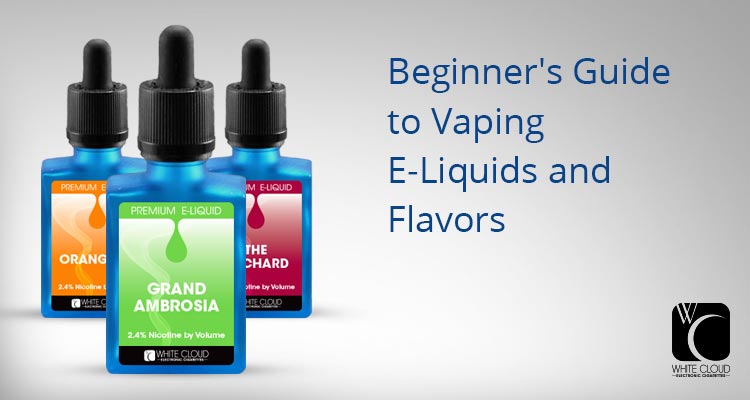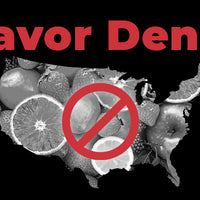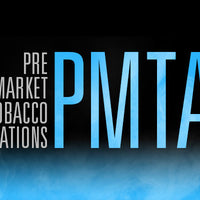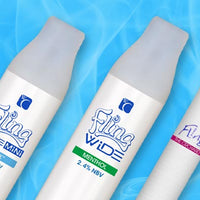Opponents of electronic cigarettes often raise concerns about the lack of transparency surrounding the contents of e liquids. Fortunately, all reputable e cigarette companies, including White Cloud, take pride in being upfront with customers. This installment of our Beginners Guide to Vaping series will examine what’s in e liquid and which factors you should consider when switching from smoking to vaping e liquids.
What’s in E Liquid?
White Cloud is committed to letting customers know exactly what they putting in their body when they are vaping e liquid. We offer dozens of e-liquids to satisfy every vaper, and each one is comprised of the following ingredients:
- 84.6% – 92% Propylene Glycol and Glycerol
- 0% – 5.4% Nicotine
- 8% – 10% Flavorings
If you’re trying to wean yourself off of tobacco cigarettes, picking the right e liquid is essential to your success. There are three major factors to consider when purchasing e liquid: your personal tastes, the amount of nicotine and the ratio of propylene glycol to glycerol.
E Liquids and Nicotine

Most e-liquids are available in various nicotine strengths. For example, all of White Cloud’s flavors come in six different nicotine levels, including a nicotine-free option. Although many e-liquid brands quantify their nicotine levels in mg, or milligrams, White Cloud uses NBV, or nicotine by volume because it provides a more accurate measurement of how much nicotine the user is consuming. Most smokers don’t know how much nicotine they consume daily, which is why we made a guide for choosing the right nicotine strength based on your smoking habits.
Nicotine strength is the most important factor to look at when shopping for e-liquids, but you should also know that the type of device you use has an impact on nicotine delivery. Mods and other e-cigs powered by manual batteries that let you adjust the temperature and wattage settings generally produce more vapor than cig-a-likes, which means the user gets more nicotine in each puff. Therefore, vaping e liquids with high nicotine content may be too harsh to use with such devices.
What are PG/VG Ratios?

Propylene glycol and glycerol are FDA-approved excipients commonly used in processed foods, beverages and medications. There’s a good chance that you consume them both unknowingly on a regular basis. Glycerol is also called vegetable glycerin, or VG, and propylene glycol is abbreviated as PG. In e-liquids, they are responsible for producing the vapor that delivers nicotine and flavoring to the user.
Many vapers don’t have a strong PG/VG ratio preference, but different proportions of these two ingredients produce slightly different effects. E-liquids that are higher in PG tend to be more flavorful and provide a stronger “throat hit,” or the tingly feeling smokers are used to when they inhale. The nicotine level also affects the throat hit – the higher the nicotine strength, the stronger the throat hit.
Vaping e liquids with more VG are milder, yet they produce denser clouds of vapor. If you find a particular e-liquid to be too harsh, try a version that is higher in VG; if you’re not getting a strong enough throat hit, look for e-liquids higher in PG.
E Liquids and Flavorings

E-liquid manufacturers use food-grade extracts to add flavor to their products, so many of the ingredients in e-liquids can be found in various candies and snacks. If you vape e-liquid from a reputable seller in the U.S., such as White Cloud, you can assume that all of the ingredients are generally recognized as safe for consumption by the FDA. Research on the effects of inhaling such extracts so far suggests that vaping is harmless for both vapers and bystanders.
However, there is one ingredient in particular that has gotten a lot of bad press: diacetyl. Diacetyl has been used for decades to produce an artificial buttery flavoring for popcorn. Factory workers who inhale large quantities of diacetyl over time can develop an unpleasant disease called “popcorn lung,” which is why media outlets freaked out when a few e-liquid companies started using diacetyl in their products.
Of course, reports failed to mention that the quantities of diacetyl found in the e-liquids weren’t even remotely close to dangerous levels; in fact, regular tobacco cigarettes contain 750 times more diacetyl than the e-liquids in question. Nonetheless, White Cloud doesn’t carry any e-liquids containing diacetyl or any other ingredients that have come under such scrutiny.
Related: Popcorn Lung and Vaping
How Does E Liquid Smell and Affect Taste?
For some of us, the smell of tobacco smoke is comforting and nostalgic, but most nonsmokers just think it’s disgusting. Thankfully, the vapor produced from e-liquids is mostly odorless. Any aroma from vaping e liquid comes from the flavoring, which is often quite pleasant and may be mistaken for air freshener or fresh baked goods. However, if you really want a tobacco flavored e liquid, White Cloud has you covered.
Another downside to smoking tobacco cigarettes is that it dampens your senses of smell and taste. Ex-smokers find that switching to vaping e liquids improves their senses, yet there is a phenomenon called “vaper’s tongue,” which occurs when you lose sensitivity to specific e-liquid flavors. Fortunately, vaper’s tongue is avoidable and reversible by staying hydrated and switching up your flavors.
Which E liquid is Right for Me?
You should be picky about what goes into your body, which is why you should only be vaping e liquids purchased from reputable sellers who disclose their ingredients. No two products are alike, so keep experimenting until you find a flavor, nicotine strength and PG/VG ratio that satisfies you. If you’re trying to make the transition from tobacco to e-cigarettes, take comfort in knowing that there is a ton of research that suggests whatever you are vaping is safer than smoking.
Making the Switch to Vaping
If you’re still considering making the switch to vaping, you’ve come to the right place. In the final part of this beginner’s guide, we’ll provide helpful tips and tricks so you know exactly what to expect when transitioning from smoking to vaping.






